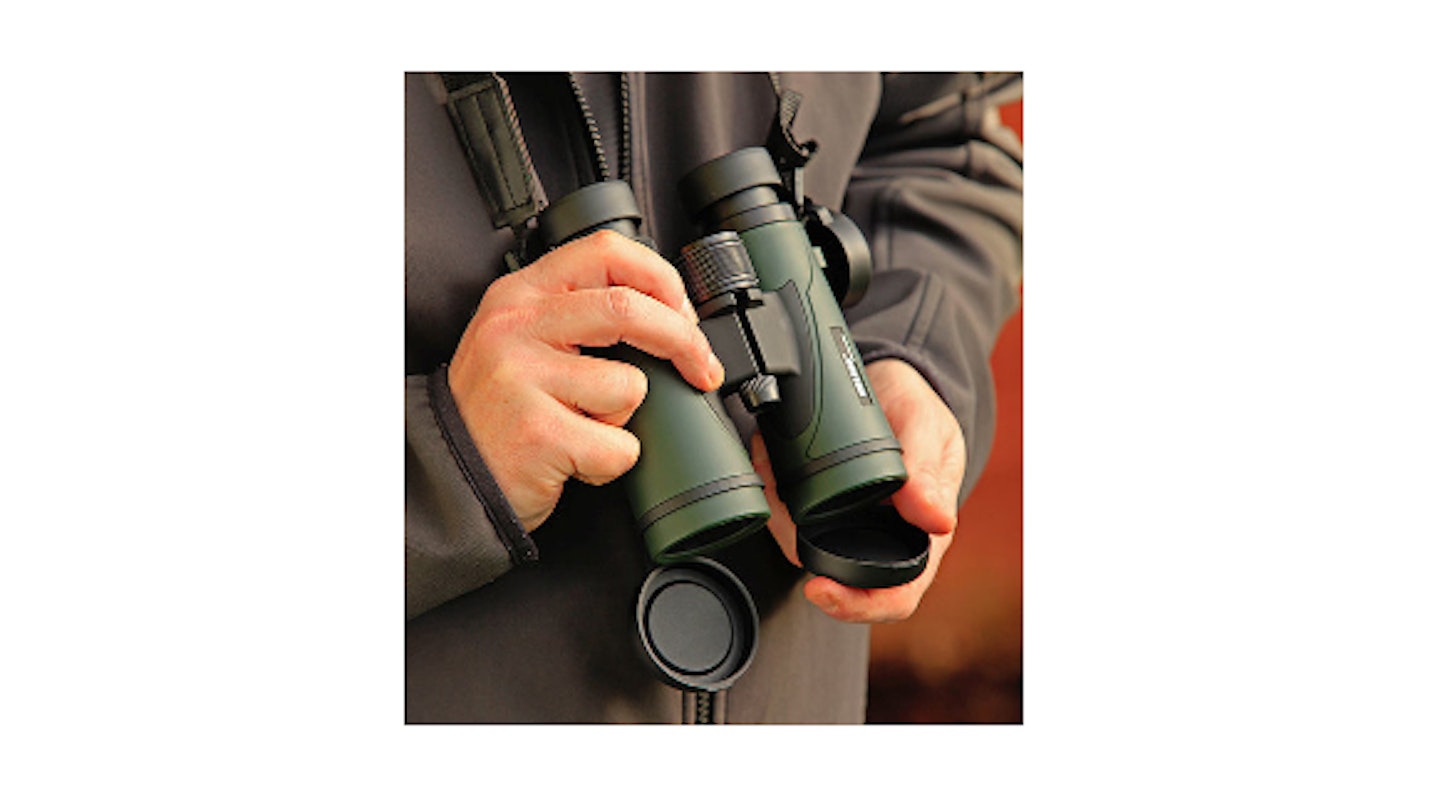Factfile:
Helios Mistral WP6 8x42
Field of view (@1000 m): 129m
Close focus: 2m
Eye relief: 17.5mm
Dimensions: 140mm x 105mm x 58mm
Weight: 682g
RRP: £109.95
Ratings:
Optics 4
Handling 4
Price 4
Overall 4
Review by Matt Merritt
Every few months, a colleague from one of our sister magazines will ask for some recommendations for binoculars to buy as a present for a relative who’s just got into birdwatching. Typically, they want to spend around £100, maybe £150 at a stretch.
In recent years, finding suitable models to tell them about has become easier, as binoculars at the budget end of the market have become more and more impressive.
Helios’s new Mistral WP6 bins landed on my desk just a few minutes after one of those conversations with a co-worker. So, can I whole-heartedly endorse them?
The closed-bridge design is unremarkable, but they feel solid and robust in the hand, with plenty of rubber armouring, and well placed thumb indents to make them easier to grip.
They’re light, at 682g, and well-balanced enough to be easy to handle. The eyecups are comfortable, offering 17.5mm of eye relief, and twist up and down to three positions, with the intermediate one very secure in extended use.
The dioptre adjustment, on the right barrel, isn’t click-stopped, but it takes some effort to move, so there’s little chance of it inadvertently slipping out of place.
The focus wheel is a little more than one finger wide, and well textured for extra grip – even while wearing thick gloves on a couple of chilly mornings, it was easy to use.
So far, so user-friendly. The image produced is what makes or breaks any pair of bins, though, and there’s very little here to complain about. The colour feels very natural, and contrast is good, while the 42mm objective lenses gather plenty of light – only in really low light did I miss the extra punch that ED glass offers (there’s an ED version available, for £155).
The image is sharp and clean, with relatively little fall-off in that towards its edges, and the field of view (129m@1000m) feels more expansive than the figures suggest. Chromatic aberration was hard to find – only when tracking birds against bright low sun was it really noticeable.
FOCUSING IS PRECISE
The focus wheel turns slowly if rather stiffly, taking just over two anti-clockwise turns from close focus to infinity, and focusing is precise yet easy to find. And while the close focus limit of 2m is surpassed by some bins, it’s more than adequate for most needs and would have been considered absolutely outstanding a short time ago.
The strap provided is adequate, although you might want to replace it with a wider one, and there’s a fabric case, a rainguard that removed easily and quickly, and removable tethered objective lens covers.
For £110, they cover all the bases that any beginner birder could want, offering excellent all-round optical performance and a design and build that should cope with most eventualities. Next time a colleague asks me for some sub-£150 recommendations, they’ll figure highly on the shortlist.
This review was first published in the January 2016 issue of Bird Watching magazine.

